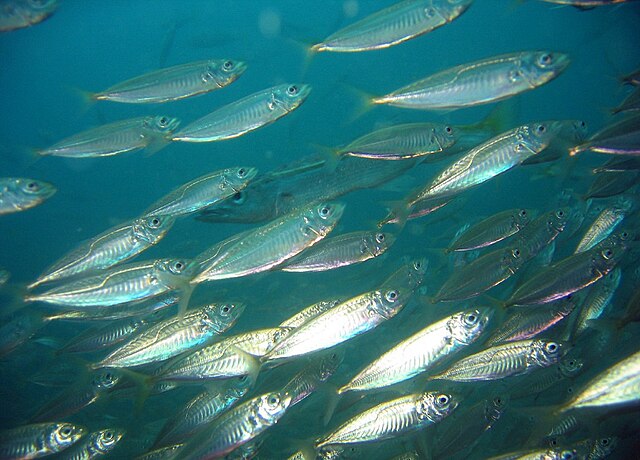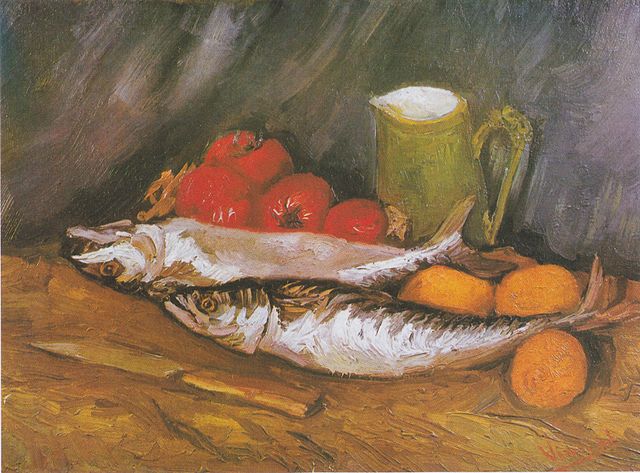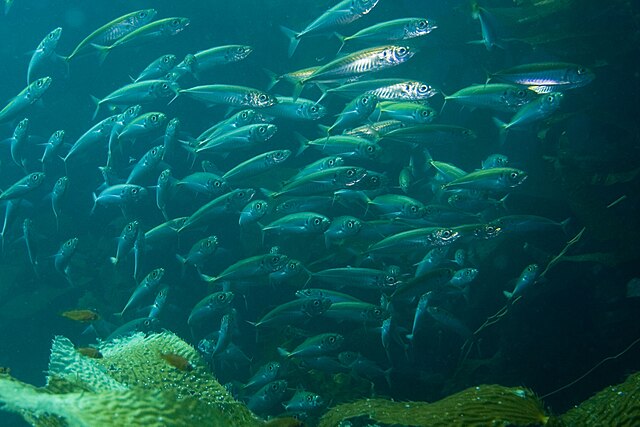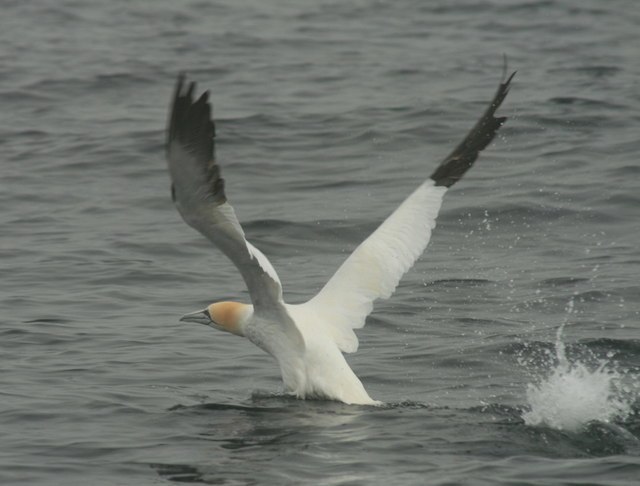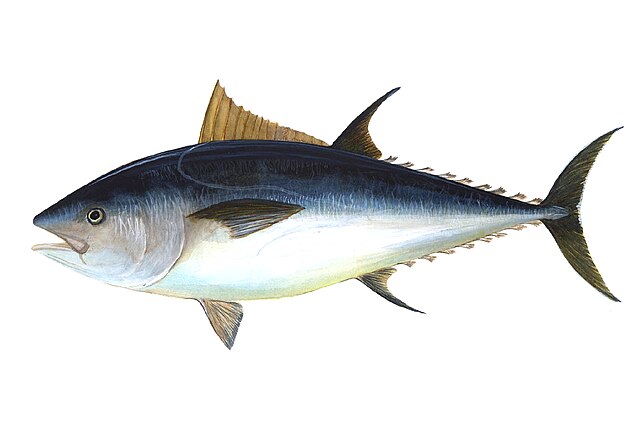Mackerel is a common name applied to a number of different species of pelagic fish, mostly from the family Scombridae. They are found in both temperate and tropical seas, mostly living along the coast or offshore in the oceanic environment.
Some species of mackerel migrate in schools for long distances along the coast and other species cross oceans
Still life with mackerel, lemon and tomato, Van Gogh, 1886
Mackerel, such as these Pacific jack mackerel, usually have vertical stripes on their sides which provide "schooling marks", visual clues that help them stay in formation as they school.
Gannets and other seabirds fuel themselves with mackerel
Pelagic fish live in the pelagic zone of ocean or lake waters—being neither close to the bottom nor near the shore—in contrast with demersal fish that live on or near the bottom, and reef fish that are associated with coral reefs.
A school of large pelagic predator fish (bluefin trevally) sizing up a school of small pelagic prey fish (anchovies)
Large epipelagic predator fish, such as this Atlantic bluefin tuna, have a deeply forked tail and a smooth body shaped like a spindle tapered at both ends and countershaded with silvery colours.
Drifting Sargassum seaweed provides food and shelter for small epipelagic fish. The small round spheres are floats filled with carbon dioxide which provide buoyancy to the algae.
Great barracuda accompanied by a school of jacks

